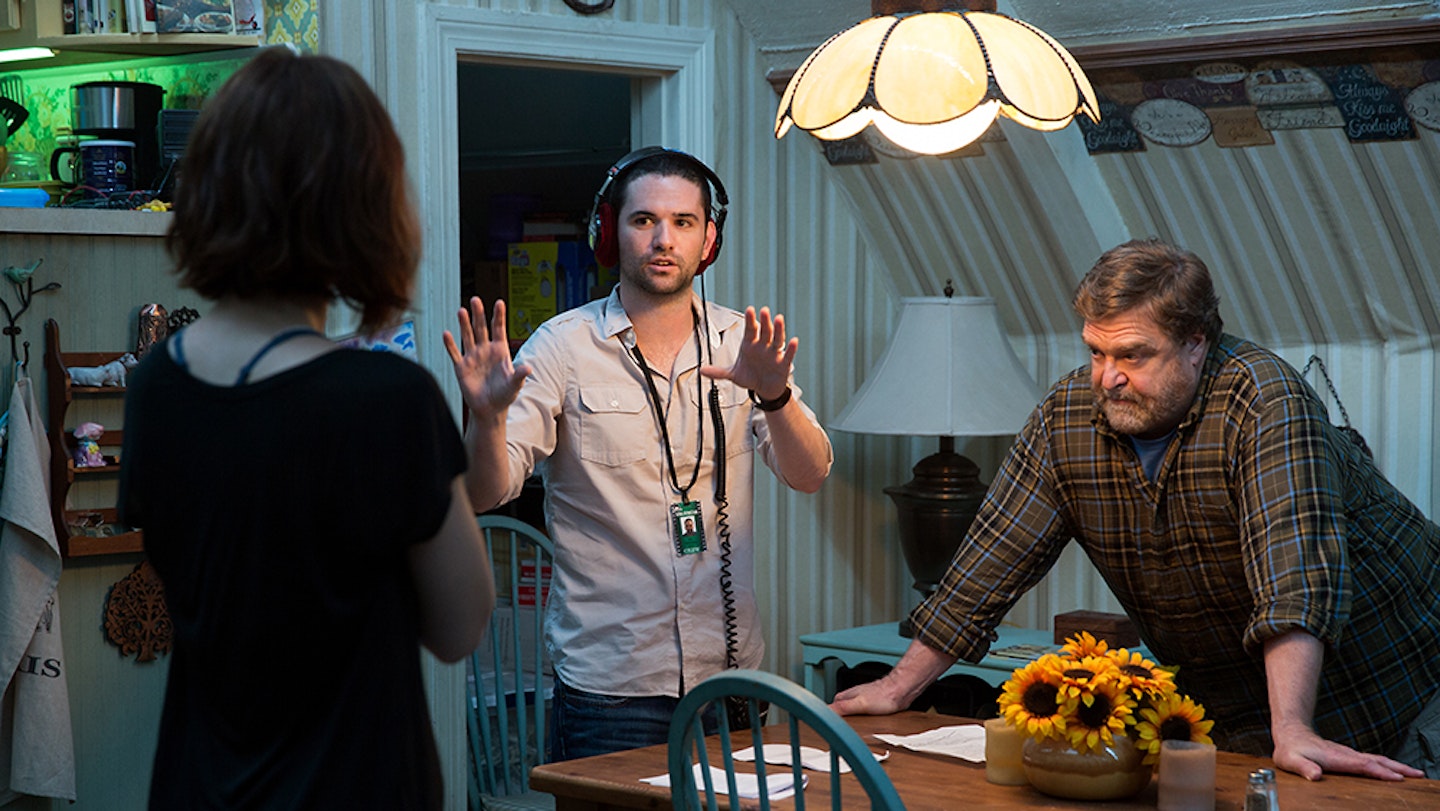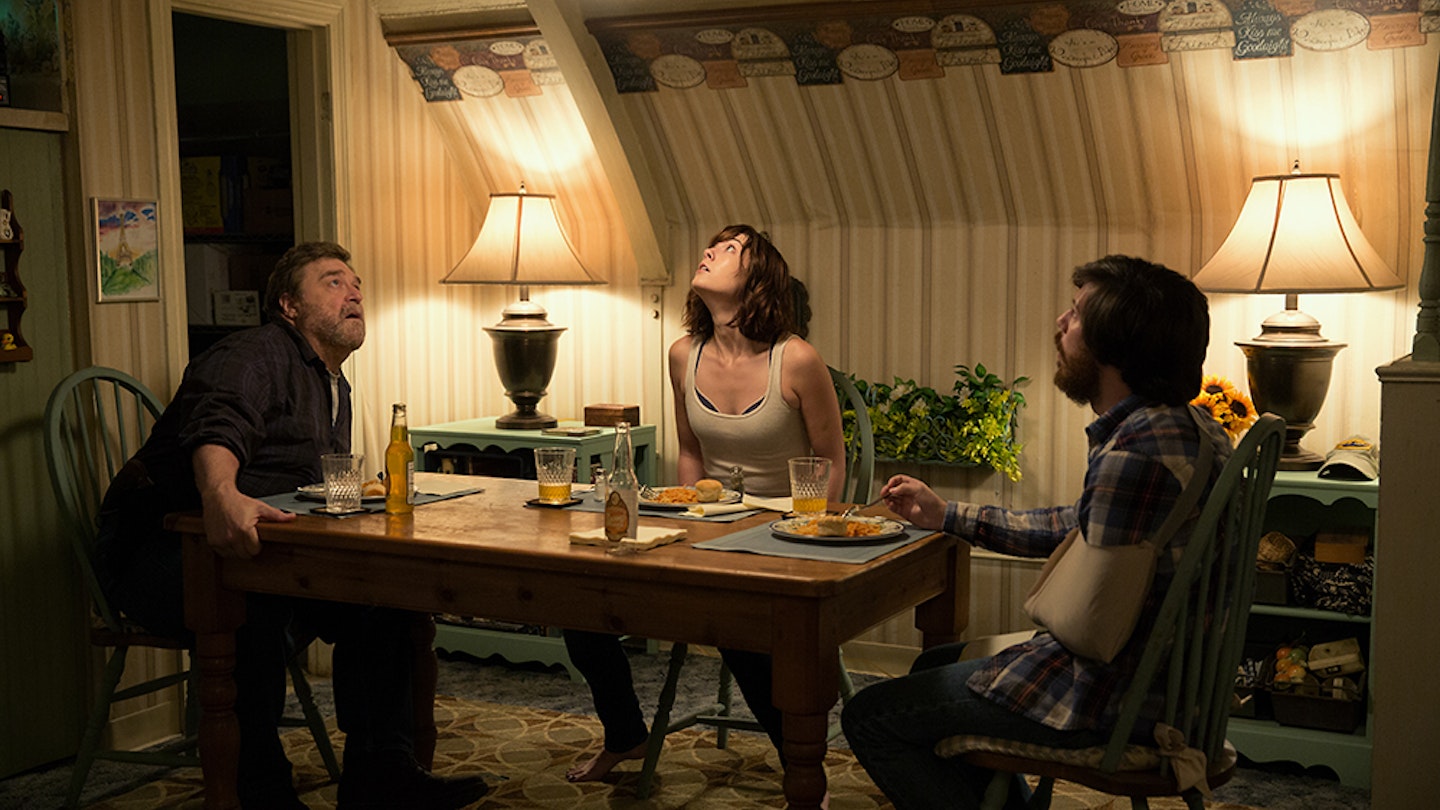Acting since he was a child, John Gallagher Jr.’s career has seen him grace the big screen, small screen and the stage. Though best-known for his work on Broadway (he won a Tony for his role in rock musical, Spring Awakening, and wowed audiences as the lead in Green Day’s American Idiot), many will know him as Brie Larson’s boyfriend Mason in Short Term 12 or loveable journalist Jim Harper in Aaron Sorkin and HBO’s The Newsroom. His latest project sees him dive into the unknown (at least for us) with Bad Robot. We recently caught up with him to talk all things 10 Cloverfield Lane: most notably working with John Goodman and his experience seeing Valencia morph into Cloverfield’s “blood relative”.
Is it possible to describe where 10 Cloverfield Lane fits in the Cloververse?
There’s a reason why it’s not called ‘Cloverfield: Part 2’. It’s not a direct furthering of that story or a continuation in the traditional kind of sense. But there’s something about it. I can’t think of a much better way to put it than the ‘blood relative’ terminology that [J.J. Abrams] so aptly chose for it, because it does definitely feel that way.
There’s a reason why it’s not called ‘Cloverfield: Part 2’.
What I loved about Cloverfield was that it was a larger-than-life thriller but it had a really human core to it, and I think that’s why that movie succeeded the way that it did. The found-footage style really pulled audience members in. It was very modern and very new. The characters, despite all of the larger-than-life madness that was happening, stayed very grounded and I think that’s something that carries on into this film: it’s an intimate tale, really, about people reacting to extreme scenarios and extreme situations.
How early on did you realise Valencia was becoming 10 Cloverfield Lane?
It’s awesome because it happened very organically. Obviously a lot of it happens behind closed doors: the cast is usually the last to know these things. I felt almost as surprised as everyone else did! There was rumblings of it as we were making Valencia, and there was a vibe happening. There were some things in the script and some tone and theme things that Bad Robot folks and J.J. in particular were like, “This feels like it is tied to that other film in some way." So they started thinking about that, but then once we got the ball rolling and once we felt that we had found that blood relative, we said, “Let’s not shy away from that, let’s lean into that.” But I didn’t know necessarily that we were on that path. Whether or not that was a masterminded thing I don’t know necessarily. [Bad Robot are] such mad scientists in that way.

What can you tell us about the central trio?
Mary’s character, Michelle, is somebody’s who’s running away, who is trying to escape one thing only to find herself trapped in another environment. John’s character, Howard, is a proper red-white-and-blue, God-fearing American; a bit of a doomsday prepper, as you can tell. He had the plan to make this place. And then my character, Emmett, is just kind of a simpleton. He’s a local boy who is just like a puppy dog, a sweetheart who is trying to keep the peace down there. That’s just kind of the template, obviously there are other dark corners that get investigated, and things change here and there and tensions flare up in a bunch of different ways. But that’s the general gist.

What was it like working with John Goodman?
I’ve been such a fan of his for such a long time, so I was definitely starstruck. But he’s so warm and sweet and generous and genuinely funny. But he’s also a very, very serious actor on set, and has a really strict work ethic and would come in and kill it and then be so serious and so intense in all those scenes and then crack a joke between takes to keep everybody in a good mood. I had a few moments on set with him where I was like, “Wow! This is really happening.” [Emmett] annoys him at various points throughout the movie: I’m the obnoxious kid of the family.
It’s kind of a little fly-on-the-wall look at these people trying to stay sane.
You’re used to working with witty, fast-paced scripts from your time on The Newsroom. Is there space for humour down in the bunker?
There’s a lot of fun moments. My character Emmett really tries to be a bit of a jester and a peacekeeper, attempting to keep it light and cracking jokes. The dialogue was great but there are little bits and pieces of improvisational stuff that worked its way into the movie. What first drew me into the script was its mysteriousness but also the fact that it was intimate; most of the time it was just these characters talking. And then I found out that it was John (Goodman) and Mary (Elizabeth Winstead) and I was like, “This is going to be a cool combination if we get the three of us together with this great script”!
It’s kind of a little fly-on-the-wall look at these people trying to stay sane down [in the bunker] and trying to keep the peace and figure out what’s the next step. It lives down there for a while so that the audience can really settle into the claustrophobia and the sense of “What’s going on out there? Are these people going to get out? What is it that’s happening up there? How did they even get down there in the first place?” So all of those questions start getting slowly answered. But it’s a good portion of the flick that happens in that closed kind of cabin fever feeling.
How much was J.J. able to be involved?
He wasn’t really able to visit us because he was so busy making Star Wars - whatever happened to that? Did it come out? I hope it does well. I have such high hopes for it. (Laughs.) He was busy, I don’t know how the guy does it, but he was wrapping up shooting that while we were filming in New Orleans and so he wasn’t really able to be a physical presence. But anything that he does you really feel his energy everywhere you go. We had people from Bad Robot on set with us every day, it was an extension of him, an ambassador of sorts. And so you never forgot, “Well, we’re here, we’re all here brought into this by his good faith and belief in the project”.

Are you personally a fan of these dystopic, doomsday-type stories?
I certainly feel it. When you’re reading the news and sometimes you just think, “How bad can things get”? I feel a natural artistic response to that is why you have influxes of stories of that kind, explorations about the dark corners of boiling down the essence of humanity and what keeps us human and what struggles await in the future. That’s a genre I’ve always been interested in, for sure.
The tagline is ‘monsters come in many forms’. We saw the big monster destroying the little people back in 2008. Is this the little people destroying the little people?
It does investigate the essence of ‘what is out there that’s scary and big’ versus ‘what’s in here that’s smaller and scarier and maybe we didn’t even know it was inside of us to begin with’. Especially because it has that kind of claustrophobic feel of people being trapped. If you find yourself running away from something and then suddenly you’re isolated in a vacuum, then you have to deal with all the inherent truths and learning things about yourself and the people that are around you and do you trust them? Do you trust yourself? Who’s got the secret, who’s good, who’s bad? It really does tackle a lot of those more human-related things.
10 Cloverfield Lane is released in UK cinemas on March 18. It hits the US on March 11.
Read our interview with J.J. Abrams here.
Read our interview with director Dan Trachtenberg here.
Read our interview with Mary Elizabeth Winstead here.
